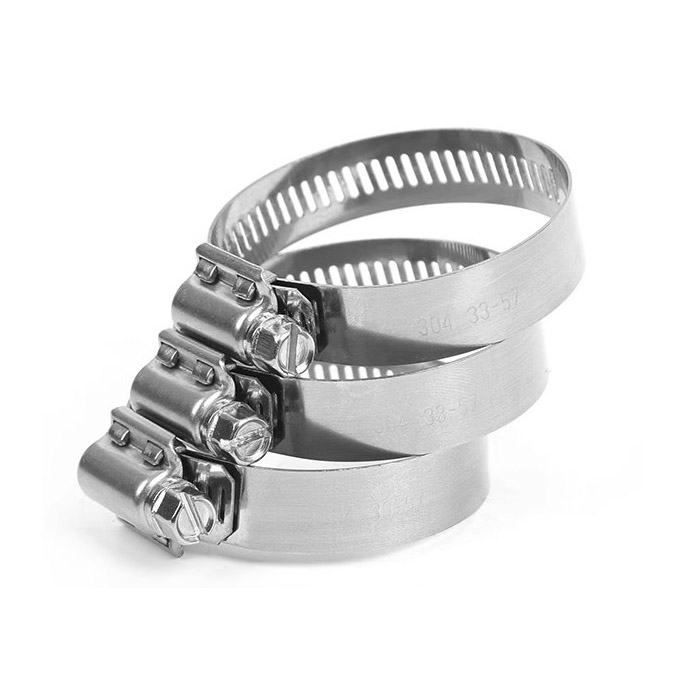- Phone:+86-17331948172 +86-0319-8862898
- E-mail: inquiry@puxingclamp.com
Ago . 17, 2024 15:01 Back to list
Manufacturers of Hose Clamps for Drainage Systems and Accessories
Understanding Drain Hose Clamp Factories An Overview of Their Importance and Functions
Drain hose clamps are essential components in various industries, including automotive, plumbing, and household appliances. These seemingly simple devices play a critical role in ensuring the safe and secure connection of hoses in systems that transport liquids. As the demand for reliable drainage solutions increases, the significance of drain hose clamp factories has grown accordingly. This article delves into the functionality of drain hose clamps, the manufacturing process, and the factors influencing the industry.
The Role of Drain Hose Clamps
Drain hose clamps are designed to hold hoses securely in place, preventing leaks and ensuring optimal performance. They are widely used in applications such as
1. Automotive Systems In vehicles, drain hose clamps are used to connect coolant and fuel hoses, contributing to engine efficiency and safety. 2. Plumbing Applications In plumbing, they secure the connection between drain pipes and hoses, preventing water leakage and ensuring proper drainage. 3. Household Appliances Appliances like washing machines and dishwashers rely on hose clamps to maintain pressure in their drainage systems, preventing spills and ensuring smooth operation.
Due to these critical functions, the quality and reliability of drain hose clamps are paramount. Any failure in these components can lead to leaks, equipment damage, and even safety hazards.
Manufacturing Process
The manufacturing of drain hose clamps involves several key steps, each ensuring that the final product meets stringent quality standards
. The primary materials used in the production include stainless steel, plastic, and rubber, chosen for their durability and resistance to corrosion.1. Material Selection The first step is selecting high-quality raw materials. Stainless steel is favored for its strength and resistance to rust, while rubber is often used for sealing purposes. 2. Design and Engineering Engineers design clamps to meet specific requirements, considering factors like hose diameter, pressure tolerance, and environmental conditions. Advanced software for modeling and prototyping is often utilized during this stage.
drain hose clamp factories

3. Fabrication Depending on the design, the manufacturing processes can include stamping, bending, and molding. Stainless steel strips may be cut and shaped into the desired form, while plastic clamps are molded using injection techniques.
4. Assembly After fabrication, the various components of the clamps are assembled. This might include attaching handles or securing rubber seals to ensure a tight fit around the hoses.
5. Quality Control Once assembled, the clamps undergo rigorous tests to ensure they meet industry standards. This may involve pressure tests, corrosion resistance testing, and inspections for dimensional accuracy.
Industry Influencers
Several factors influence the drain hose clamp manufacturing industry. Firstly, advancements in technology have enabled manufacturers to produce more efficient and reliable clamps. Automation and precision engineering significantly enhance production capacity and quality.
Secondly, the growth of various sectors, such as automotive and construction, has increased demand for durable drainage solutions. As more industries adopt stringent environmental regulations, the need for secure and leak-proof systems has never been greater.
Moreover, global supply chain dynamics, including materials availability and labor costs, also impact production. Manufacturers are often challenged to keep costs down while maintaining high-quality standards.
Conclusion
In conclusion, drain hose clamps may appear to be simple components, but their role in ensuring safety and efficiency across various industries cannot be underestimated. The factories producing these clamps are vital in addressing the growing demand for reliable drainage solutions. By employing advanced manufacturing techniques and adhering to strict quality control measures, these factories contribute significantly to the integrity of numerous systems relying on effective drainage. As industries continue to evolve, the importance of drain hose clamps and their manufacturers will undoubtedly remain a critical factor in achieving operational excellence.
-
High Quality Precision Stainless Steel Strip - GPT-4-Turbo Grade
NewsAug.02,2025
-
Heavy Duty Hose Clamp | Premium Durability & Security
NewsAug.01,2025
-
Large Stainless Steel Adjustable American Type Hose Clamp - Hebei Pux Alloy Technology Co., Ltd.
NewsAug.01,2025
-
Large Stainless Steel Adjustable American Type Hose Clamp - Hebei Pux Alloy Technology Co., Ltd
NewsAug.01,2025
-
Large Stainless Steel Adjustable American Type Hose Clamp - Hebei Pux Alloy Technology Co., Ltd.
NewsJul.31,2025
-
Large Stainless Steel Adjustable American Type Hose Clamp - Hebei Pux Alloy Technology Co., Ltd | Corrosion Resistance, High Torque
NewsJul.31,2025




